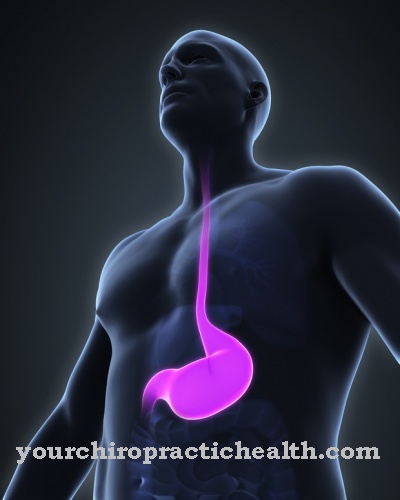The drug Noscapine is obtained from the opium poppy. It is used to relieve the urge to cough.
What is noscapine?

Noscapine is an antitussive. This means that the active ingredient is used to treat coughs. The alkaloid noscapine is obtained from the opium poppy (Papaver somniferum), which belongs to the poppy family (Papaveraceae) and from which opium can also be produced.
Noscapine was already known as an opium extract to the French pharmacist and chemist Antoine Baume (1728-1804). In 1817 his compatriot Pierre-Jean Robiquet (1780-1840) succeeded in isolating the active ingredient from opium. From a chemical point of view, the substance is a methoxy derivative of the alkaloid hydrastine. In Germany, noscapine is offered as a monopreparation under the name Capval®.
Pharmacological effect
Noscapine is one of the antitussives, also known as cough suppressants. Antitussives have the property of inhibiting the cough center, which is located within the brain stem. The same applies to the sensitive receptors in the lungs. However, the use of antitussives such as noscapine only makes sense if it is a dry cough without secretion of mucus. Because by inhibiting the cough center, the mucus cannot be coughed up, which under certain circumstances can worsen the infection.
Noscapine only works peripherally. The fabric has bronchodilator and breath-stimulating effects. However, because noscapine has no pain relieving properties, it does not belong to the group of opiates. In addition, no euphoric effects are triggered, so that there is no potential for addiction.
Due to its peripheral properties, noscapine can neither suppress breathing nor have a calming effect. Another advantage of the product is that the side effects of constipation, which is often associated with the use of opioids, do not occur.
According to recent studies, noscapine also has the advantage of inhibiting the enzyme CYP2C9, which means that the agent has anti-tumor effects.
The plasma half-life of noscapine is between 2.6 and 4.5 hours. This results in an individually variable bioavailability, which is around 30 percent.
Medical application & use
Noscapine is used to treat unproductive nocturnal irritable coughs. This means coughing without phlegm. The cough is not an independent disease, but is caused by certain causes. This can be acute or chronic bronchitis, chronic obstructive pulmonary disease (COPD) or whooping cough (pertussis). Sometimes anatomical changes or tumors are also responsible for the development of dry coughs.
Noscapine is also considered useful if the cough causes considerable stress on the heart and circulation. This includes, for example, the risk that an aneurysm threatens to burst due to the intense cough. Noscapine is taken orally in the form of coated tablets or juice. The usual dose for children aged 6 to 12 years is three coated tablets per day, while children over 12 years and adults take two coated tablets three times a day. For babies over six months old and toddlers up to five years of age, other dosage forms, such as juice or drops, are available that are more suitable for them.
The noscapine coated tablets usually contain 25 milligrams of noscapine each. The juice contains 25 milligrams of noscapine in 5 grams. In adults, coughing is stopped with a dose of 50 to 100 milligrams of noscapine. How long the antitussive must be taken depends on the course of the disease.
Since noscapine is subject to prescription in Germany, the drug can only be obtained in this country on presentation of a prescription in the pharmacy.
You can find your medication here
➔ Medicines against coughs and coldsRisks & side effects
Unwanted side effects are rare when taking noscapine. The most common symptoms are drowsiness and headaches. In some cases, itching, skin reactions and dizziness can also occur. Quincke's edema occurs rarely in the face and neck region, which is noticeable as swelling. Other possible side effects are pain in the upper abdomen, shortness of breath and a feeling of oppression. If the dose of noscapine is too high, there is a risk of seizures.
Taking noscapine must be avoided if the patient is hypersensitive to the drug. The same applies to an allergy to components of the antitussive such as methyl hydroxybenzoate. The administration of noscapine does not make sense if there is pronounced mucus formation. This prevents the active ingredient from coughing up the mucus. Noscapine is not suitable for children who are younger than six months.
You should also refrain from taking noscapine during the first trimester of pregnancy. A possible miscarriage through the antitussive cannot clearly be ruled out. During breastfeeding, however, there are no concerns about the administration of the cough suppressant, as only small amounts pass into breast milk, so that the baby is not at risk.
The patient should refrain from driving cars or other motor vehicles after taking noscapine. The same applies to the operation of complicated machines or electrical tools, since the agent can negatively influence the ability to react.
In addition, interactions between noscapine and other drugs are possible. It is therefore advisable not to administer the antitussive together with expectorant preparations, as otherwise there is a risk of secretion build-up. A joint administration with opioids, sleeping pills, neuroleptics, antidepressants, sedatives and alcohol is also not useful.



























